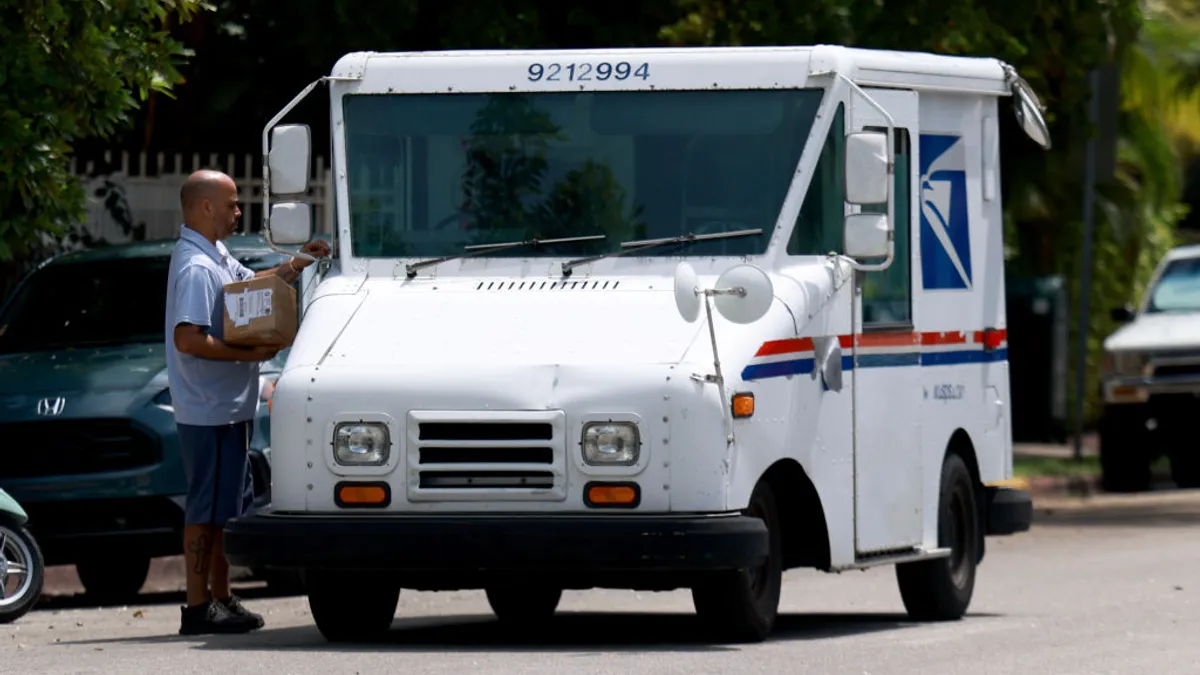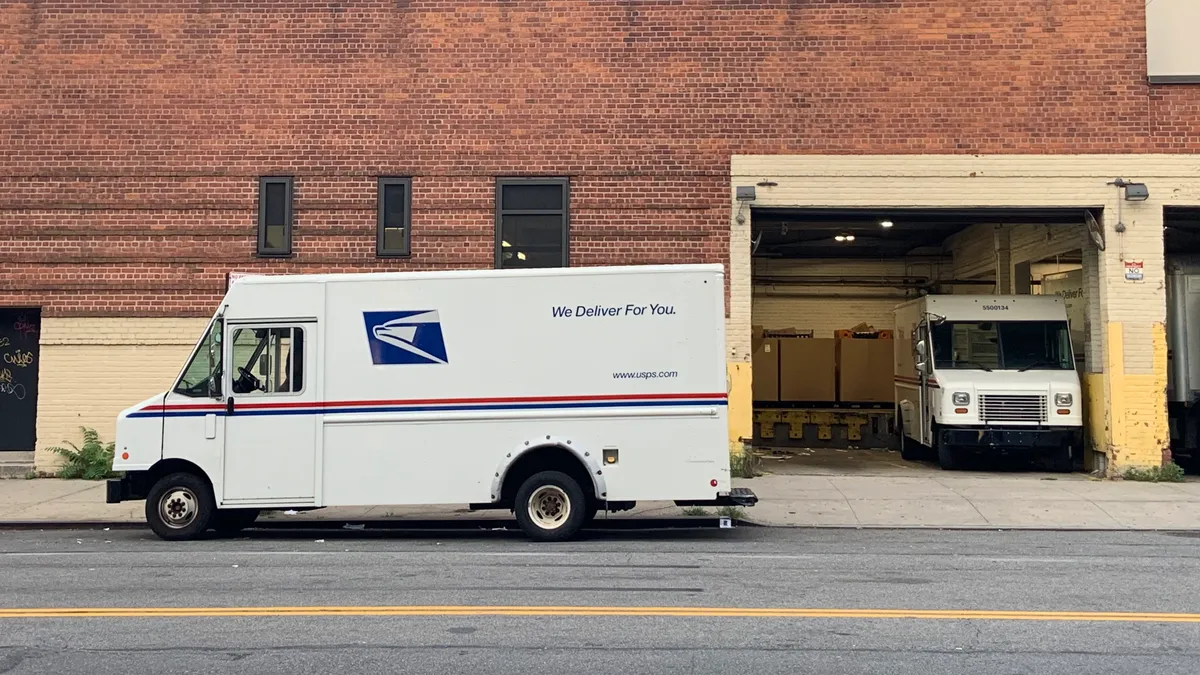The U.S. Postal Service unveiled further details for its proposed transportation shakeup earlier this month, outlining how its plan to consolidate dropoff and pickup activities at some post offices could slow delivery speeds for rural locations while expediting shipping closer to top processing facilities.
Recent filings with the Postal Regulatory Commission offer additional detail and context regarding the Postal Service's Regional Transportation Optimization plan, how it complements the agency’s wider operational shifts and what the changes mean for delivery speeds. Here are three key takeaways for shippers.
1. Rural communities more exposed to slowdowns
Lawmakers and rural residents are fretting over the impact the Postal Service's plan will have on areas far away from major network facilities.
Under the proposal, volume collected at post offices in ZIP codes more than 50 miles away from the nearest regional processing and distribution center would have their morning and afternoon dropoff and pickup activities consolidated into a single route. The change would result in one additional transit day for that volume.

The Postal Service acknowledged in an Oct. 4 filing that several stakeholders believe “this proposal unfairly impacts rural mailers, including with respect to receipt of Social Security checks and medicines.” Despite those concerns, the agency said it will still move forward with the plan.
The agency noted that its changes will affect both urban and rural communities, adding that the majority of downgraded volume originates in urban areas. Postal Service officials also said during a virtual presentation last month that slowed-down volume will still reach its destination within existing delivery timeframes, adding that any changes wouldn't come until next year.
However, urban areas see a much larger share of Postal Service mailing activity than rural communities overall. Factoring that in, the downgrades are poised to disproportionately impact mail from sparsely populated areas, according to the agency's own analysis.
Rural shipments more exposed to slower transit times under USPS plan
Single-piece first-class mail volume will bear the brunt of the downgrades. About 68% of that volume in rural communities will experience downgraded service standards, according to the analysis, cited in testimony from Arslan Saleem, USPS director of corporate performance reporting and analytics.
Still, the Postal Service said rural customers will benefit from faster origin-to-destination processing speeds for mail they're receiving, assuming the originating ZIP code isn't impacted by the Regional Transportation Optimization program.
2. Sundays, holidays won't count for transit time
The Postal Service plans to exclude Sundays and holidays from counting as transit days for packages brought into its network the day prior, according to Saleem.
For example, if mail entered the network on Saturday with a two-day service standard, current Postal Service practices would result in the expected delivery day being Monday. The proposal, if implemented, would change the expected date to Tuesday.
About 14% of market dominant volume is slated to be affected by the proposal, Saleem said. National delivery competitors already exclude Sundays and holidays as transit days when measuring service performance.
"By not counting Sunday as a transit day, the Postal Service would also ensure consistent service standards across all post offices and product categories," Saleem said.
The tweak could also provide the Postal Service some relief in its on-time delivery metrics, as the agency battles continued scrutiny over its service reliability.
Not counting Sundays and holidays should lead to more flexible weekend processing activity, agency officials said. Reduced weekend operating hours would lead to higher volume levels across fewer hours, allowing Postal Service machines to handle "throughputs they were designed for (without waiting for volume)," Gregory White, USPS executive director of operations integration and performance excellence, said in submitted testimony.
3. Competitive services affected, but extent unclear
The Postal Service's in-progress network overhaul will help USPS Ground Advantage and other package shipping offerings capture more market share thanks to improved processing efficiency and better service, White said.
Shifting work from local mail processing plants to a smaller number of regional processing and distribution centers, or RPDCs, will allow Postal Service shippers "to reach a higher population density within each service area, ensuring broader and more efficient coverage," White said. For example, in regional shipping lanes, Ground Advantage will be able to reach more addresses in two days.
The plan's specific impacts on package delivery services like Ground Advantage and Priority Mail — known as competitive products, since they compete with private parcel carriers' offerings — are not being disclosed publicly "due to their competitive sensitivity," Saleem said in his testimony. However, he noted that the majority of this volume will either have the same or improved service standards, as most packages enter the network within 50 miles of processing facilities.
The plan will also usher in more precise service standards, according to White, as shipments will consider the full ZIP codes for origin and destination addresses, rather than just evaluating speeds at the broader three-digit ZIP code level.
"Packages collected within 50 miles of an RPDC may also reach the entire RPDC region on the very next day; in this regard, the new 5 Digit-to-5 Digit ZIP Code service standards will afford greater visibility into individual lanes and, thus, will allow for more efficient planning, both on our part and on the part of our customers," White said.
Editor's note: This story was first published in our Logistics Weekly newsletter. Sign up here.






















